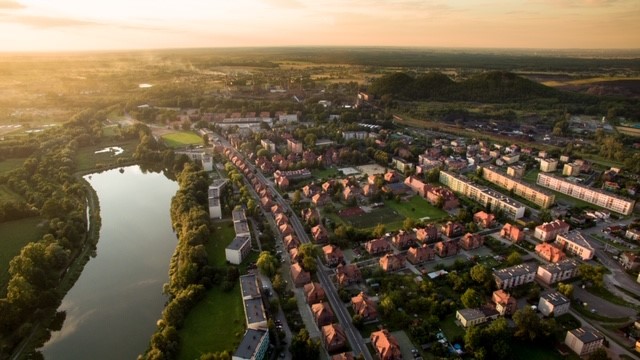The Approach of the Silesia Region to Smart Specialisation Strategy Monitoring
Poland
Silesia (Slaskie) (2020)
Five key smart specialisations areas were identified in the "Silesia Region’s Regional Innovation Strategy for 2013-2020", (Śląskie Voivodeship, Poland), corresponding to energy, medicine, information and communication technologies, green economy, as well as emerging industries. Monitoring and evaluation aim at collecting, reporting and interpreting data describing the region's progress and development as well as the effects of public intervention (project, programme or strategy). In this area, the monitoring of the Silesia region’s innovation strategy focuses mainly on the results and projects’ deliverables.
A set of indicators for the Regional Innovation Strategy of the Silesia Region
The monitoring system of the Silesia Region’s Innovation Strategy (RIS) consists of index indicators and contains quantitative and qualitative sub-indexes and variables that provide information about innovative processes taking place in the region. The system includes both smart specialisation related indicators developed specifically for the measurement of innovation in the region, as well as benchmark indicators that ensure comparison to be made with other regions and countries, used for example by the European Commission and the World Bank.
The most crucial parameters to measure the strategy implementation are based on the one hand, on impact indicators that relate to the achievement of the vision and description of the spin-offs of actions taking place in the region, also beyond the strategy implementation period and on the other hand, on result indicators that relate to priorities implementation. Observation and analysis of indicators’ dynamics will enable the assessment of progress (or the lack of it) or a threat to the realisation of a specific priority or goal. General trends, developed on this basis, might be applied for updating the RIS. The identified threats, in turn, will constitute a basis for undertaking relevant actions, e.g. intensifying the use of support instruments or the introduction of new ones.
Furthermore, a set of horizontal indicators for monitoring the vision of the "Regional Innovation Strategy of the Region of Silesia for 2013-2020" include:
- Smart Index for the five smart specialisations areas,
- Knowledge Index,
- Social capital Index, in particular the level of trust,
- Innovation Index ,
- Investment attractiveness index.
- In 2014-2015, the methodologies for calculating these horizontal indicators and values for 2015 (pilotage) were developed by the Regional Specialist Observatories, using statistical data for a particular index and showing the current state of affairs.
The Smart index is composed of sub-indexes defined for the five smart specialisation priority areas (as well as six partial indicators for each of these sub-indexes[1]. The indicators were developed based on the business intelligence economic data of the Central Statistical Office (GUS) and the Polish Agency for Enterprise Development (PARP). It allows for starting the monitoring and development processes of the region's smart specialisation priority areas.
The monitoring governance of the Silesia Region
The actors of the innovation ecosystem of the Silesia Region play an important role in the implementation of monitoring and evaluation processes, taking into account their competences and responsibilities in the system. The Silesia Voivodeship is leading the monitoring process and is responsible for collecting data in the area of innovation, science and entrepreneurship. In particular, the Coordination Unit for the Implementation of the Regional Innovation Strategy, that is located in the Marshal's Office, acts as the responsible body of the monitoring process.
In addition, the Network of Regional Specialised Observatories is responsible for the collection of appropriate data related to each of the 9 technological areas[2]. These observatories include regional actors from the Entrepreneurial Discovery Process, comprising business support institutions, innovation agencies, industry and small and medium enterprises as well as the science and research sector. These observatories collect statistical and qualitative data that foment the monitoring system. Besides, business support institutions, such as innovation agencies and science and technology parks, are responsible for establishing a direct contact with industries and SMEs using a standardised Entrepreneurial Discovery Process (EDP) tool. The tool includes a direct interview based on a unified form in view of analysing the needs of enterprises and scientific units. It contains questions about the current situation of the entity, its environment and development strategy as well as questions about trends and planned activities. It also integrates elements of foresight related to the Smart Specialisation priority areas.
Moreover, institutions at the national level as well as advisory bodies and think tanks representing the interests of the Region in the area of regional development and based on smart specialisation areas, influence the monitoring process indirectly. Cooperation with the national entities, such as the Central Statistical Office (GUS) and the Patent Office of the Republic of Poland, provide useful statistical data that feed into the cyclical indicators’ assessment.
The annual monitoring reports are the result of the monitoring process. Entities participating in the Network of Regional Specialised Observatories prepare annual reports containing market trends in the areas of smart specialisation and valuable information and knowledge that are difficult to acquire for entrepreneurs, enabling them to make strategic decisions. The Specialised Observatories RIS reports, based on the data collected annually are an integral part of the annual monitoring report coordinated by the Marshal's Office. These reports are published on the Silesia’s Innovation Observatory platform and made available for all the actors of the innovation ecosystem.
(cf: https://ris.slaskie.pl/czytaj/przeczytaj_analizy_raporty_i_podsumowania ).
The monitoring reports are not only responding to the question of the state of affairs, but are also the basis for conclusions, which serve to change the policy development and orientation in order to ensure the achievement of the assumed objectives.
Main achievements of the Silesian Monitoring System
One of the main goals of the monitoring system is to increase the level of knowledge of institutions implementing the Regional Innovation Strategy of the Region of Silesia. Thanks to the monitoring system’s conclusions, the scope of smart specialisation priority areas was expanded. On 19 March 2018, the regional Parliament approved a resolution to add two new specialisations fields, i.e. emerging industries and the green economy, in addition to ICT, medicine and energy that were adopted in 2013.
Moreover, the Silesia Voivodeship has succeeded in securing sources of monitoring funding and has concluded cooperation agreements with the Central Statistical Office and Regional Specialist Observatories, which provide detailed information annually in selected thematic areas.
No less important is the establishment of a Regional Innovation Strategy monitoring unit within and its physical location in the Marshal's Office. This facilitates the practical use of information coming from the monitoring process by the Voivodeship Board.
With regard to Smart Specialisation implementation, the main achievement of the implementation of the Regional Innovation Strategy of the Silesia Region monitoring system, including the involvement of Entrepreneurial Discovery Process stakeholders, was the diagnosis of the technological areas at stake within smart specialisation priority areas. For example, in the medical sector, cyclically collected data allow for better addressing the services of the support sector for these entities, due to more in-depth knowledge and identification of challenges. They have become crucial, even at the national level and led to the creation of thematic platforms for medical robots. This diagnosis material has consequently become the basis for implementing and updating the Voivodeship's Technological Development Programme until 2030, as well as the prepared update of the RIS WSL 2020+.
Based on the conducted evaluation, other advantages and strengths of the monitoring system of the Silesia Region’s Innovation Strategy (RIS) are visible:
- Clearly defined monitoring principles, which include the detailed definition of indicators and cyclicality of conducted research;
- Inclusion of both "hard" (based on statistical data) and "soft" indicators, i.e. those resulting from surveys and other research;
- The use of a limited number of indicators which, however, gives a sufficiently broad picture of the state of implementation of the RIS (a large number of indicators often have an 'information flood' effect).
"The Silesia Voivodeship is leading the monitoring process and is responsible for collecting data in the area of innovation, science and entrepreneurship. In particular, the Coordination Unit for the Implementation of the Regional Innovation Strategy,that is located in the Marshal's Office, acts as the responsible body of the monitoring process".
[1] Note that not all relevant micro-data are available at regional level. In accordance with the provisions of the Regional Innovation Strategy, the horizontal indicators of the vision of innovation development, i.e. Smart Index, is calculated periodically within the framework of evaluation studies as a milestone in this respect.
[2] As indicated in the "Technology Development Programme of the Silesian Voivodeship for 2019-2030.

The Silesia Voivodeship is leading the monitoring process and is responsible for collecting data in the area of innovation, science and entrepreneurship. In particular, the Coordination Unit for the Implementation of the Regional Innovation Strategy,that is located in the Marshal's Office, acts as the responsible body of the monitoring process"
Additional Information
Silesia Region’s Innovation Strategy website (in Polish)
Invest in Silesia (in English)
Travel in Silesia (in English)

